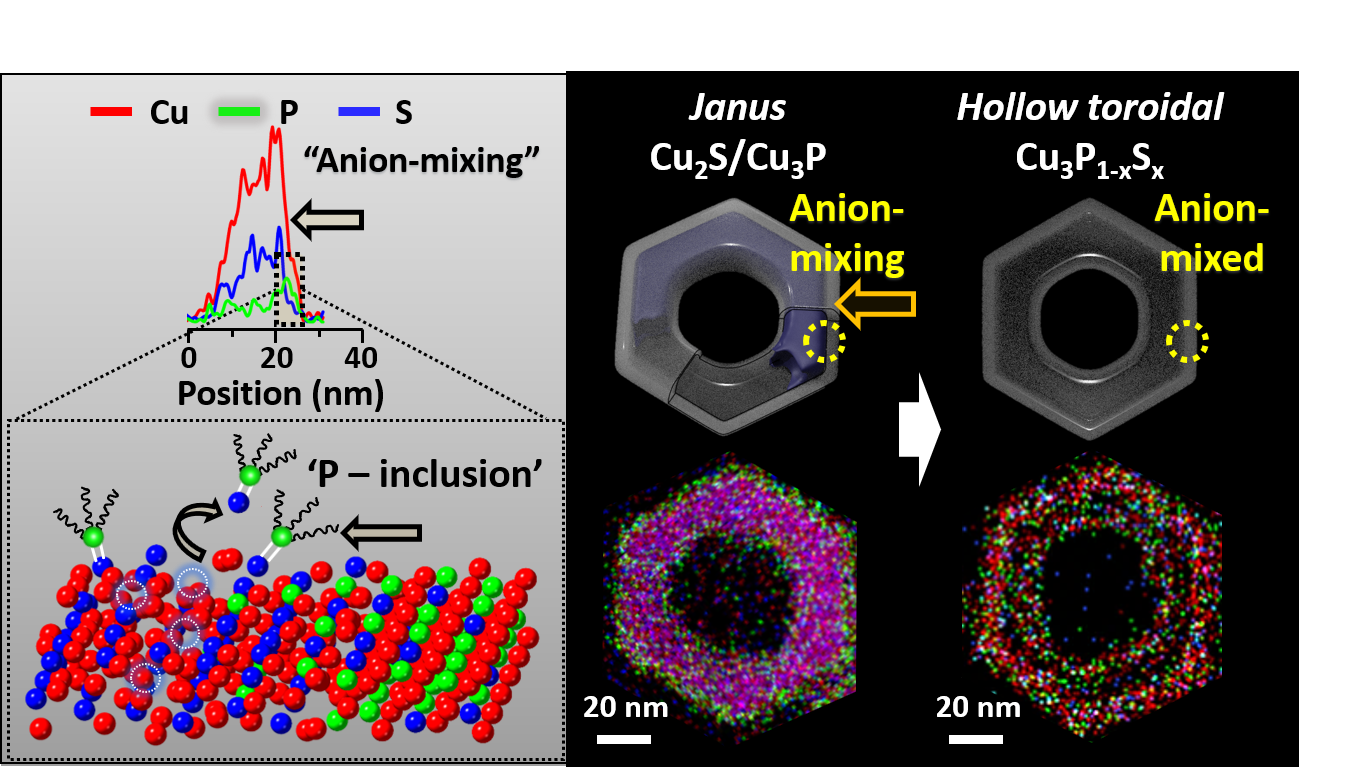


홍용주 김태경 조진형
(공동 제1저자)
Post-modification of nanocrystals through cation exchange has been very successful in diversifying nanomaterial compositions, while retaining the structural motif. Copper compound nanoparticles are particularly useful as templates because of inherent defects serving as effective cation diffusion routes and the excellent cation mobility. Therefore, the development of shape-controlled multi-anion systems such as copper phosphosulfide can potentially lead to the formation of diverse metal phosphosulfide nanomaterials that have otherwise inaccessible compositions and structures. However, there is, to the best of our knowledge, no report on the shape-controlled synthesis of copper phosphosulfide nanoparticles, because the introduction of the second anion to the metal compound might destroy the nanoparticle morphology and crystallinity due to the required high energy for anion diffusion and mixing. Herein, we report that it is feasible to transfer the structural motif of copper sulfide to copper phosphosulfide by using tris(diethylamino)phosphine. The anion-mixed copper phosphosulfide in the form of hollow toroid could provide a pathway to previously inaccessible phases and morphologies. We verified the versatility of copper phosphosulfide hollow toroid as a cation-exchange template by the successful synthesis of cobalt, nickel, indium, and cadmium phosphosulfides as well as bimetallic cobalt-nickel phosphosulfide (Co2−xNixP1−ySy) with a retained structural motif.

 Catalytic Nanoframes and Beyond
Catalytic Nanoframes and Beyond
 Molecular Design of Highly Efficient Heavy-Atom-Free Triplet ...
Molecular Design of Highly Efficient Heavy-Atom-Free Triplet ...

















